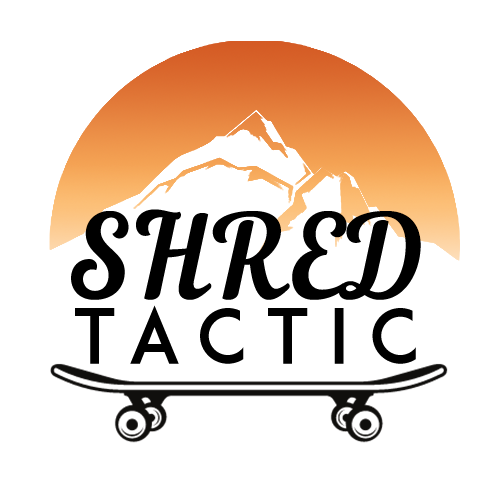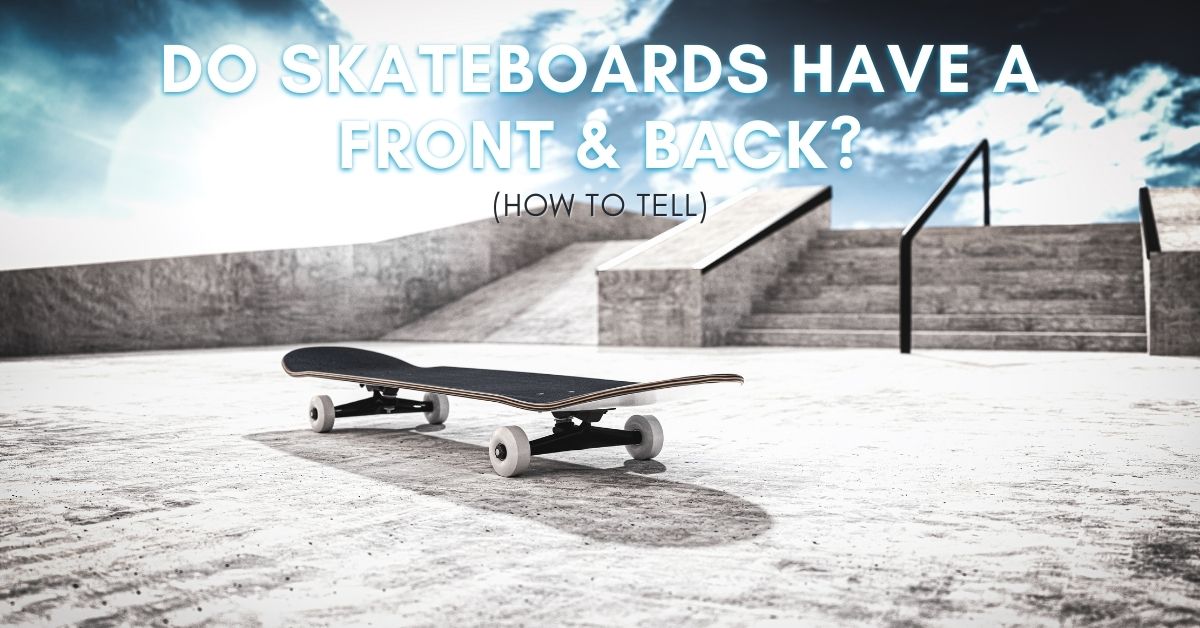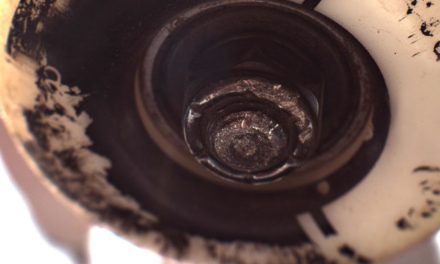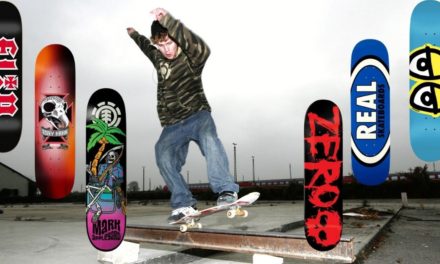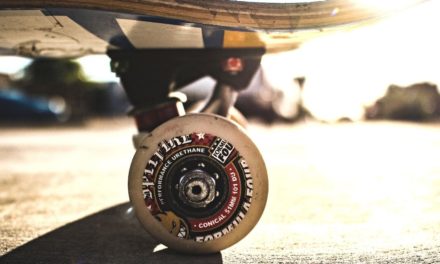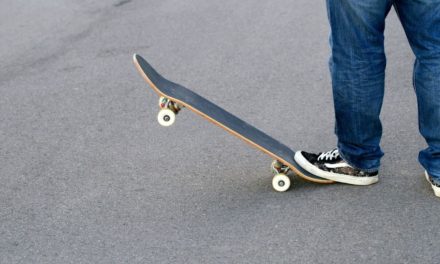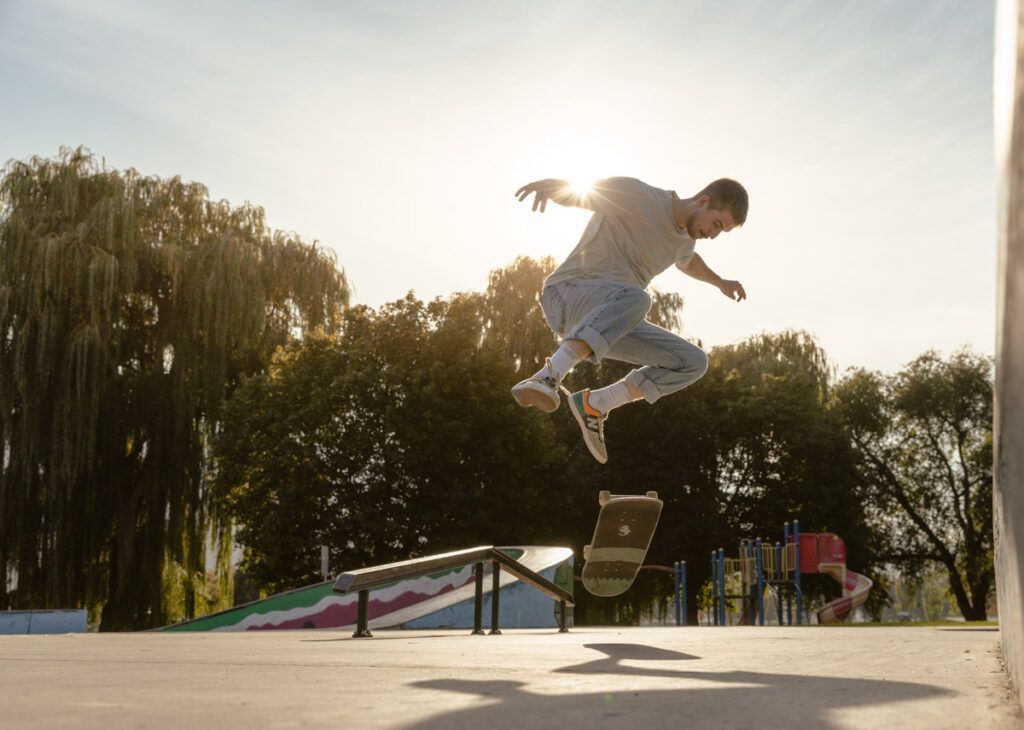I remember when I first looked at a skateboard and thought the front and back of the board were exactly the same. In fact, I even went as far as thinking there was no difference between the two at all.
In hindsight, this couldn’t be further from the truth, but if you can’t quite tell the difference yet, don’t feel bad. It’s definitely not an obvious feature of the skateboard.
With that said, being able to identify the nose (front) and the tail (back) of your skateboard can prove useful. Particularly so in how it feels to ride your skateboard.
Does A Skateboard Have A Front And Back?
Yes, all skateboards have a front and back, commonly referred to as the nose (front) and the tail (back). The nose of a skateboard is typically longer than the tail, often noticeable when standing on one side or the other on your board.
With that in mind, the next time you’re out skating, take note of how it feels to ride one side of your board versus the other. In most cases, you can feel the extra size of the nose underfoot, which slightly changes how it feels to ride your board.
3 Ways To Tell Which End Of Your Skateboard Is The Front
1. Look At The Graphics On Your Deck
The absolute easiest way to tell the nose from the tail is to look at the orientation of the graphics on your board. Skateboard decks are designed so that when the tail (back) of the board is on the ground, the graphics appear upright.
So if you can tell where the “bottom” and “top” of the graphic are, you can then see where the nose and tail of your board are.
Now I will admit there is a bit of a flaw in this method as there is a lot of blank decks out there. Without any graphics for reference, you’ll need to rely on some other tricks to identify either end.
2. Compare The Length And Steepness Of Either End Of The Deck
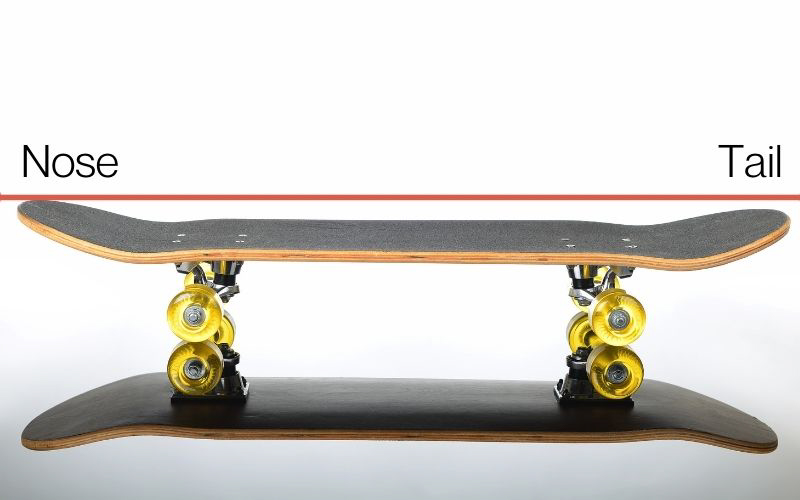
Another defining characteristic that separates the nose from the tail is its length and steepness. The tail (back) or your skateboard will often be shorter, with a less steep angle curving upwards.
Compare that to the nose, and you’ll see that it has a more steep and longer upward curve. This is why it feels a bit different when you’re standing on the nose versus the tail.
By holding your board up to eye level and looking at either end, you should be able to see the difference. The only time you won’t is with longboards, penny boards, and some cruiser decks. This trick only works with traditional concave skateboard decks.
3. Use Different Colored Hardware On The Nose
An easy trick to tell the nose and tail apart is to use different colored screws on the front end of your skateboard. This way you can simply look at the color of the screws and know exactly where the front and back are.
A lot of hardware brands actually come with two silver bolts while the rest are black. By placing these two silver bolts closest to the nose, they can act as a guideline when orienting your board.
This trick will only work after using one of the previous two methods to first identify the nose. From there you can place the bolts accordingly when you mount your trucks.
Does It Matter If You Skate On The Nose Of A Skateboard?
If you’ve been worried that you’re skating the wrong side of your board, stop, because it doesn’t really matter on most skateboards. On a regular concave skateboard, the nose and tail are so similarly shaped that you can do the exact same tricks regardless of which side you’re using.
Where this differs is something like a penny board or cruiser that has a flat, pointed nose. With these decks, skating the nose would make it more difficult to kick turn, or lift up your front trucks when rolling off something like a curb.
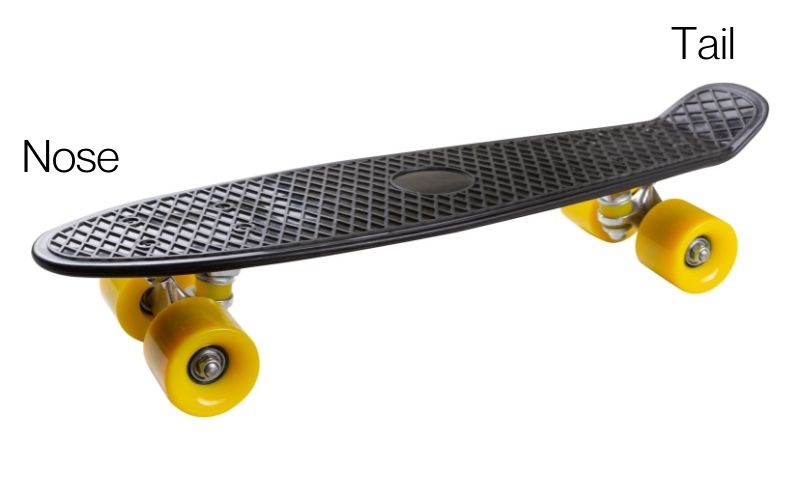
With that said, the nose of your regular concave skateboard is typically longer and steeper than the tail, so the feeling of skating might be different. Besides maybe feeling a bit “off” when rolling around, there’s no real problem with skating the nose instead of the tail.
On concave decks that is.
So hopefully that helps clear the air about which end of your skateboard is the front and which is the back. Although it doesn’t always matter which side you skate on, it’s useful to know the way your board was meant to be oriented.
Happy Shredding!
